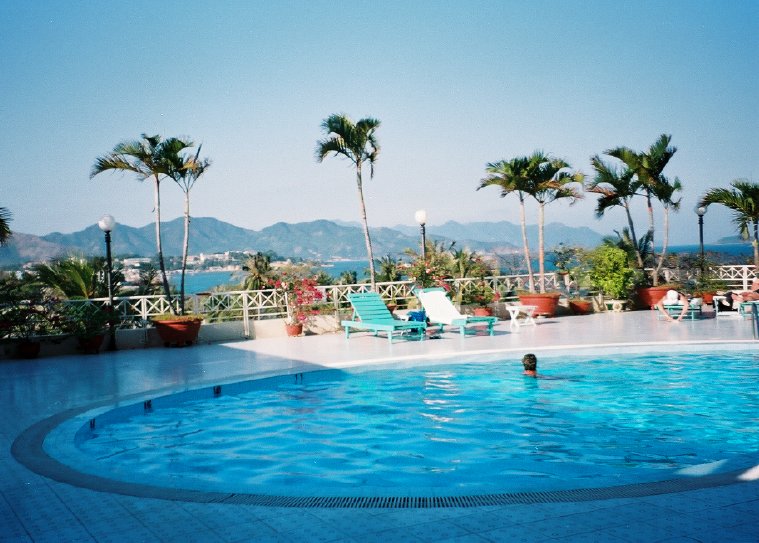INDOCHINA INTERNATIONAL CONSULTING CO., LTD
HO Add: 62L/36 Nguyên Hồng, Ward 11, Bình Thạnh District, HCMC - Vietnam
Biz Office Add: #48 Road No 11, Quarter 6, Hiệp Binh Chánh Ward, Thủ Đức, HCMC - Vietnam
®Source: http://viipip.com should be clearly quoted for any use of information extracted from our website.
Publication permit No: 60/GP-TTĐT , April 05, 2010.

What makes Vietnam’s industrial real estate most attractive in 2019?
Date: 7/15/2019 12:33:20 PM
Geographic location, policies and incentives in drawing foreign capital inflows have formed robust status for Vietnam`s industrial real estate.
Both domestic and foreign real estate experts have predicted that industrial property would be the most attractive segment in Vietnam in 2019 and the years to come thanks to a number of factors, mostly the government’s preferential policies.

Facilities in an industrial park. Illustrative photo
|
With a strong belief in the prospect of the industrial property market, Nam pointed out five reasons as follows.
First, Vietnam’s investment environment has been much improved following to the signing of many free trade agreements (FTAs), totaling 16 up to date. This active opening-up results in increasing foreign direct investment (FDI) that spurs the growth of industrial and logistics market.
Second, with a favorable geographic location, Vietnam becomes an entrepôt and a busy international transshipment hub, for example from Asian countries through Cat Lai port, and to the US and the EU through Cai Mep-Thi Vai port. The advantages enable Vietnam to develop deep water ports nationwide to support the import and export as well as logistics.
Third, Vietnam has low input costs in ASEAN and lower than that in China, its labor cost is 43% lower than that in Thailand and 10% lower than that in Indonesia. This is the main driver of FDI into the country over the past years.
In addition, the yield of Vietnam’s industrial property sector varies around 11-12%, the highest in Southeast Asia as analyzed by JLL.
Fourth, the shifting of establishments out of China to avoid the US-China trade war has awarded Vietnam more opportunities to advance the industrial real estate market in 2019 and the coming years.
Fifth, the government’s efforts in administration reforms including customs have worked out, promoting foreign capital inflows.
Vibrant development
Vietnam is on the way to become one of the bustling manufacturing hubs in Southeast Asia as the country has hastened its transformation into a manufacturing-based and export-oriented economy.
Accordingly, the establishment of key economic zones (EZs) and industrial parks (IPs) across the country has fueled the growth of the industrial property market.
The southern region takes the lead in the number of EZs and IPs with traditional industries namely rubber, plastics, and textile. The open policies and a wide network of IPs and EZs have attracted more investors of more sophisticated sectors.
The northern region appears to be the most bustling zone with hi-tech industries following the completion of the Hanoi-Haiphong-Quang Ninh economic triangle. Haiphong, notably, with a number of deep water ports would be the transportation hub in the northern coastal region.
A report by JLL showed that an additional area of 18,116 ha of industrial land would be added to the supply of industrial property in the northern key economic zone by end-2020, offering investors with abundant stock after 2019.
The central region is making significant changes with continued investment in infrastructure, relentless efforts in improving the business environment, lower labor cost, a large number of people in working age, and abundant cleared land. The aforementioned factors would lift up the industrial market.
To tap potential of the industrial property market, Nam and other experts proposed that the government should take some subsequent drastic measures.
(1) Change the mindset of the leadership in the management of the real estate sector and in the industrial segment in particular based on the market-oriented economy and international rules as well as Vietnam’s situation. Have long-term and master planning of industrial land in the locality and the region as a whole. Make the planning available to all investors and support them in the investment process.
(2) Continue investment in infrastructure by making the use of public-private partnership (PPP) on the basis of public and transparent bidding to attract more investment in expressways, sea ports, energy, logistics, multimodal transport, and production chains.
(3) Make long-term and sustainable policies on the real estate sector together with make all information, mostly on planning, credit, taxation, and fees transparent and updated to investors.
(4) Boost administration reforms and customs procedures in parallel with the connection of all economic sectors.
(5) Lower transnational transaction fees to make differences in comparison with regional peers.
(6) Conduct researches and application of proper policies in the course of Industry 4.0 to make the industrial market better approached and connected.
(7) Consider and predict risks that may affect the development of industrial market, notably environmental issues and pressure on infrastructure.
As a result, the transition has gained more trust from international investors and many of them have poured billions of dollars into Vietnam, typically Samsung has invested more than US$17 billion in the country.
(Source:The Hanoitimes)
- FDI capital continues to pour into Vietnam (6/11/2025 1:20:33 PM)
- Thanh Hoa receives good news: Preparing to have an additional industrial park of up to 470 hectares, creating jobs for nearly 30,000 people (6/11/2025 1:15:09 PM)
- Industrial Park Real Estate: Waiting for the New Generation of FDI (6/11/2025 1:10:15 PM)
- A wealthy Vietnamese city will have two special economic zones after the merger (6/11/2025 1:04:42 PM)
- 30 billion USD capital FDI in Việt Nam by 2025, a series of "ông big" races to expand the land fund (6/11/2025 12:55:26 PM)
- the 2nd largest city in the North will start construction on an international economic zone (6/11/2025 12:50:20 PM)
- Japanese giant Sumitomo continues to want to build an industrial park in the countrys fourth smallest province. (6/11/2025 12:40:45 PM)
- 3 foreign corporations want to invest billions of dollars in Ba Ria - Vung Tau (6/11/2025 12:34:30 PM)
- Lotte Group member starts construction of nearly 1,000 billion VND logistics center in the province with the most industrial parks in Vietnam (6/11/2025 12:33:26 PM)
- Forming a regional center for manufacturing spare parts and components (6/11/2025 12:24:08 PM)
- Vietnams first wafer factory is about to start construction (6/11/2025 12:19:09 PM)
- Dong Nai attracts foreign investors (6/11/2025 12:13:27 PM)
- Tay Ninhs largest industrial park welcomes a $150 million high-end knitted fabric factory project (6/11/2025 12:11:00 PM)
- (6/11/2025 12:09:10 PM)
- Vietnam will become a destination for Chinese investors in the future (11/6/2023 1:03:19 PM)

- FDI capital continues to pour into Vietnam
- Thanh Hoa receives good news: Preparing to have an additional industrial park of up to 470 hectares, creating jobs for nearly 30,000 people
- Industrial Park Real Estate: Waiting for the New Generation of FDI
- A wealthy Vietnamese city will have two special economic zones after the merger
- 30 billion USD capital FDI in Việt Nam by 2025, a series of "ông big" races to expand the land fund










 ADB: Vietnam’s 2009 GDP growth to be highest in South East Asia
ADB: Vietnam’s 2009 GDP growth to be highest in South East Asia MGM Grand Ho Tram: Vietnam’s First ‘Las Vegas Style’ Integrated Resort
MGM Grand Ho Tram: Vietnam’s First ‘Las Vegas Style’ Integrated Resort Nha Trang’s Twin Towers project licenced
Nha Trang’s Twin Towers project licenced Foreign investors still have good opportunities in Vietnam
Foreign investors still have good opportunities in Vietnam Sierra Wireless gets a foot in Vietnam’s ICT market
Sierra Wireless gets a foot in Vietnam’s ICT market